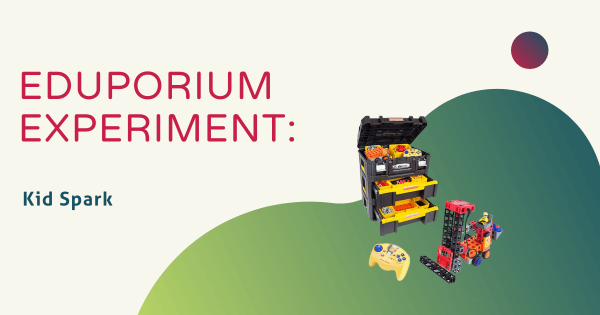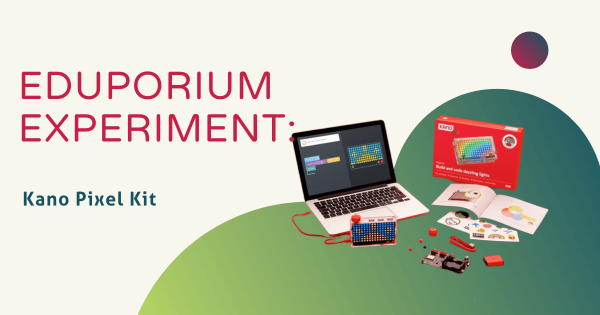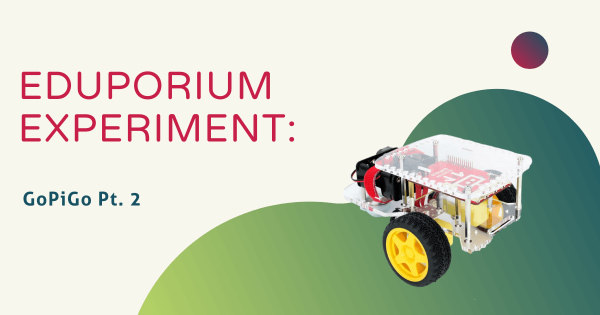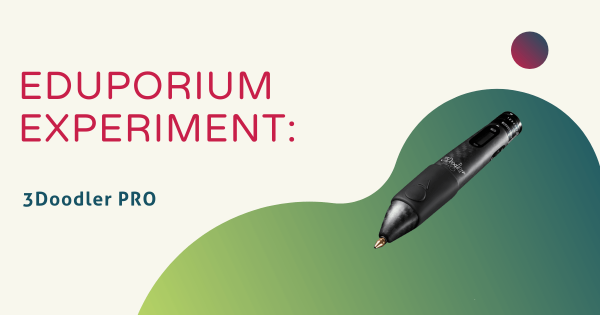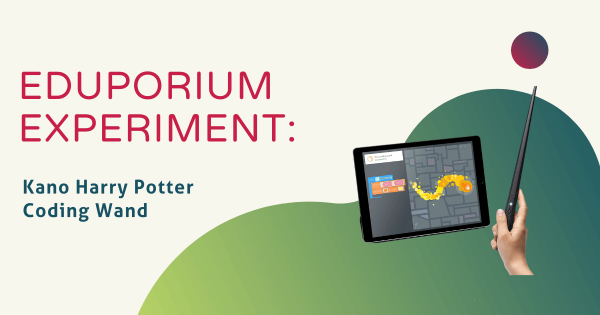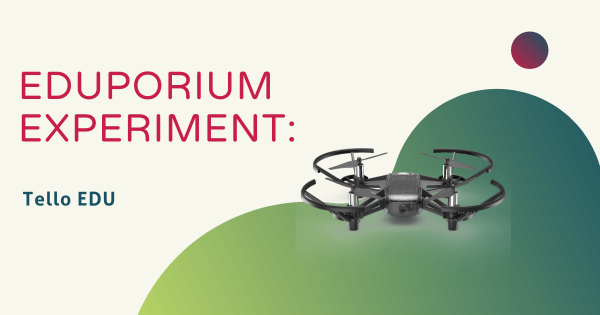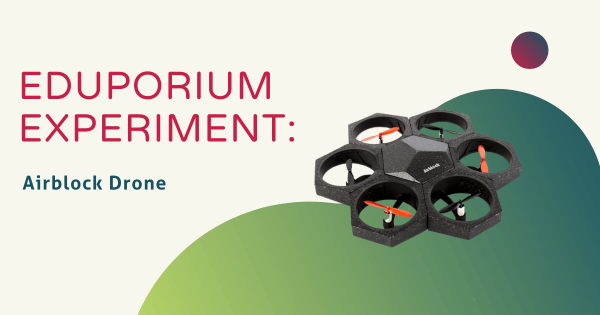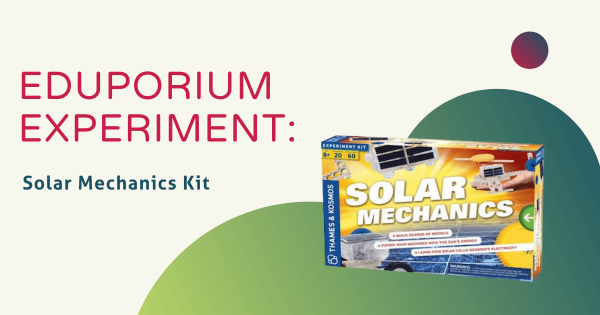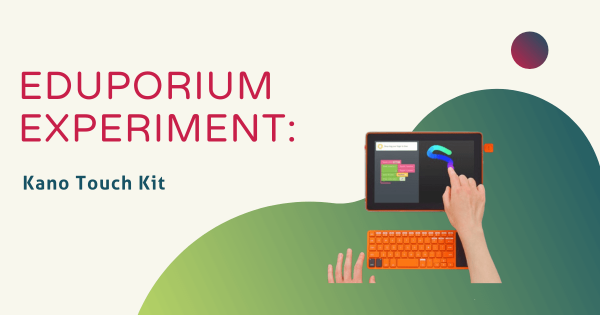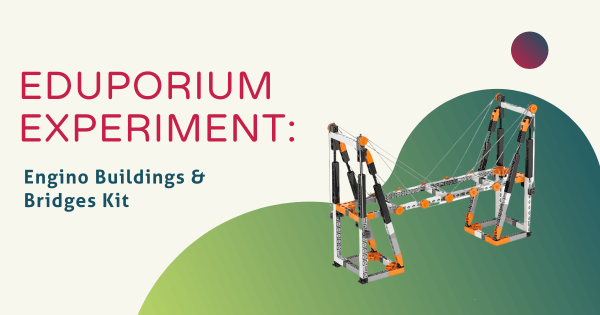Recently, we’ve been able to learn more about and sample the Kid Spark STEM kits, which, collectively, do a great job of painting a more robust picture of STEM education. With engineering, technology, and even programming at the heart of these kits, they’re a great way to bring STEM into your learning environment!
Eduporium Experiment
Our Eduporium Experiment series is one of our longest running blogs. Whenever we add new STEAM solutions to our store, we try it out so we can learn all about it. Over the years, we've covered dozens of top STEAM teaching tools, offering our first-hand insights and tidbits for educators. We believe this content gives K–12 teachers valuable information when it comes to using various STEAM solutions with their students. Our team analyzes products from different points of view and even considers implementation strategies in different educational environments. Whether it's most useful in the makerspace, library, or in the general classroom, we're happy to continue providing these helpful guides. You'll even find classroom-ready STEAM projects to try with your students. Browse through the posts or use the search bar on the left to find exactly what you're looking for.
In each 'experiment,' we provide key background information on the STEAM tool being featured. From there, we explore an actual project. This allows us to discover subtle tricks and hints that are extremely helpful for educators to know. Whether it's a coding tool, educational robotics solution, or even an engineering kit, we do our best to cover everything educators are investigating. As the Eduporium Experiment series has expanded, we've come a pretty long way. Now, you can find dozens of helpful articles that may include step-by-step project guides, troubleshooting suggestions, and even our thoughts on what makes each STEAM tool worthwhile for 21st century students. Find our insights on integrating STEM tools like the Bee–Bot, Finch 2.0, Ozobot Evo, micro:bit V2, and so many more!
-
Eduporium Experiment | Kano Pixel Kit
The original kit from Kano was just the beginning and now they offer different add-ons to help support deeper learning and even more fun. One of those add-ons is the Kano Pixel Kit, which empowers kids to invent and code dazzling lights in up to 16 million different colors. Keep reading to learn more about it!
-
Eduporium Experiment | GoPiGo Robot Pt. 2
The GoPiGo is a very versatile option for integrating both engineering and programming into STEM instruction. As is common in K-12 education, robotics is a popular way of furthering STEM experiences and the GoPiGo is a great example of how that is done. Once they get it built and set up, students can also program it in Python or the Bloxter language.
-
Eduporium Experiment | 3Doodler PRO
We found some time to research and try a different version of the 3Doodler 3D printing pen, the 3Doodler PRO. Compared to the 3Doodler Start and 3Doodler Create, the PRO version is a bit more advanced and a bit more powerful, making it a great ‘next step’ option in maker education. Keep reading to learn more about the 3Doodler PRO!
-
Eduporium Experiment | Tello EDU Drone
There have been a few programmable drones around for a bit now, but we were recently able to add the Tello EDU drone to our store and its incredibly affordable for also being programmable. So, our next step was to take it for a test flight and see what STEM learning in the classroom would be like with this compact but powerful tool!
-
Eduporium Experiment | Airblock Drone
Educational drones have another cool component to them—a lot of them are programmable. The Airblock drone from Makeblock is one of those programmable drones and, in this week’s Eduporium Experiment, we take a look at its functions, abilities, and uses in education! Keep reading to learn more about the Airblock drone from Makeblock.
-
Eduporium Experiment | Thames & Kosmos Solar Mechanics Kit
With solar devices, we have the ability to harness the Sun’s massive amounts of energy and transform it into fuel for other devices—like some of the small-scale models students can build with the Solar Mechanics Kit from Thames & Kosmos! Keep reading to learn more about this kit, its parts, and why it’s great for introducing students to alternative energy.
-
Eduporium Experiment | Kano Touch Kit
There are two books kids can follow—one with instructions for building the computer and another that details all of the ways kids can then code with it. Well, now Kano has a few new models (as well as classroom packs), but for this edition of the Eduporium Experiment, we’re taking a look at the Kano Touch Kit and how kids can become engineers.
-
Eduporium Experiment | Engino Buildings & Bridges Kit
For this week’s Eduporium Experiment, we opened up our Buildings & Bridges kit, which is part of Engino’s STEM STRUCTURES series. It’s a great way for students aged between 8-16 to not only build some pretty cool structures, but also learn the science behind engineering and the physics needed to ensure its safe and sound.




